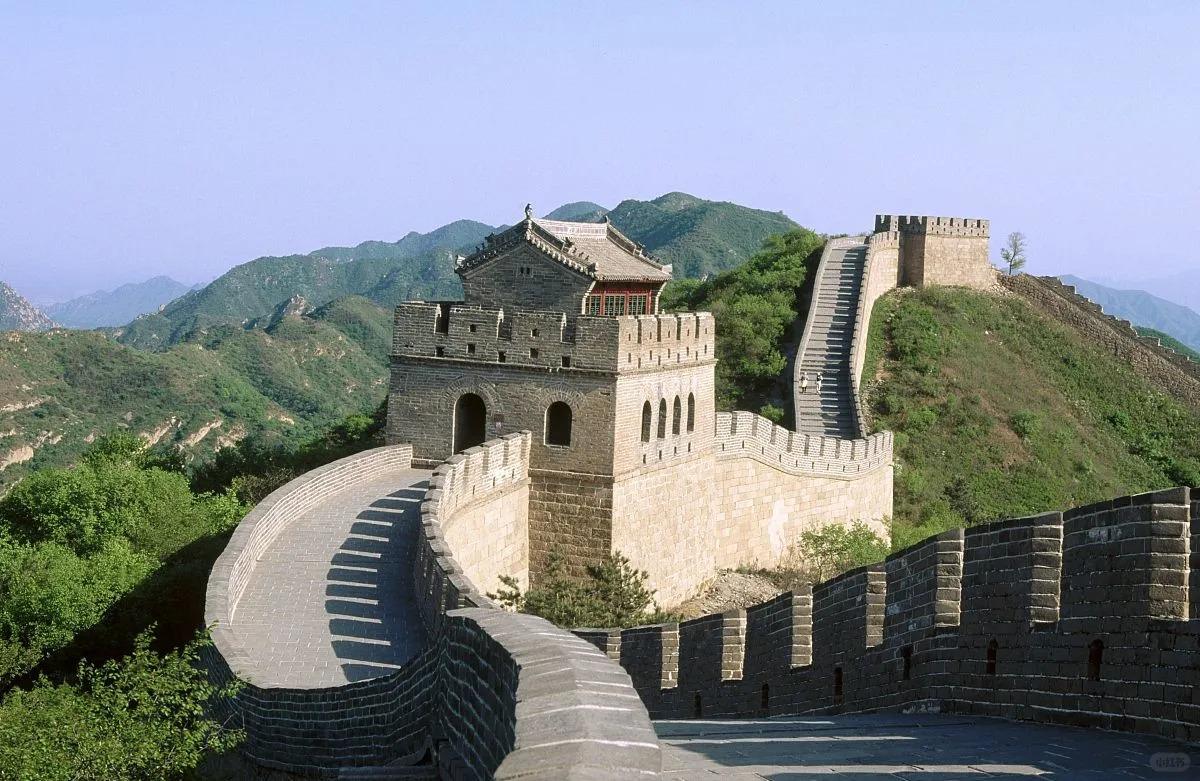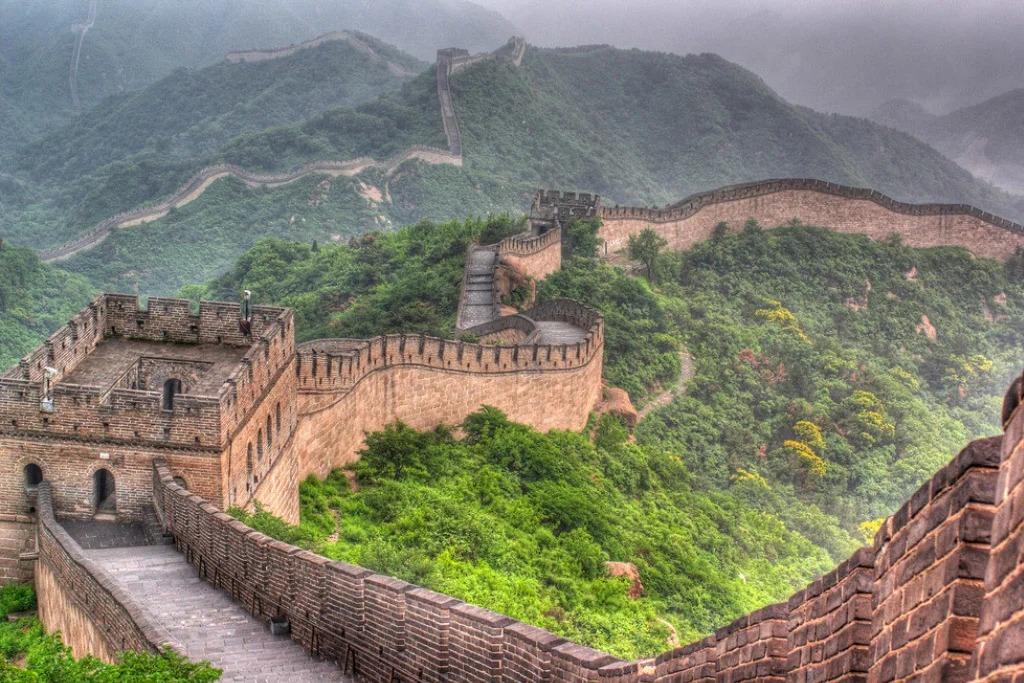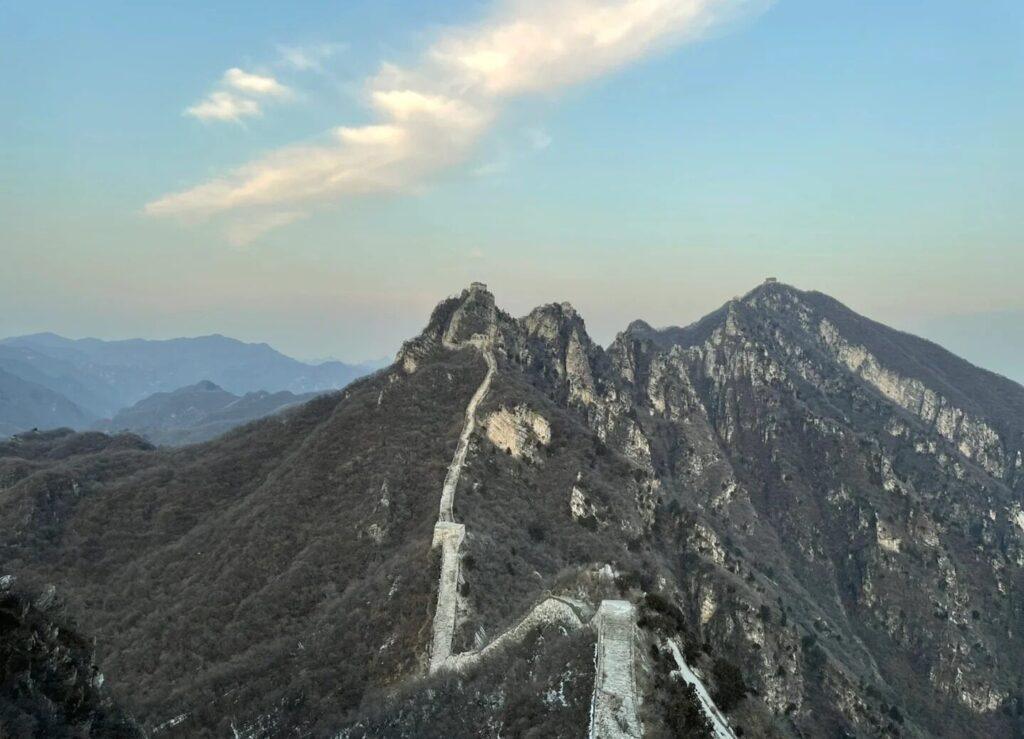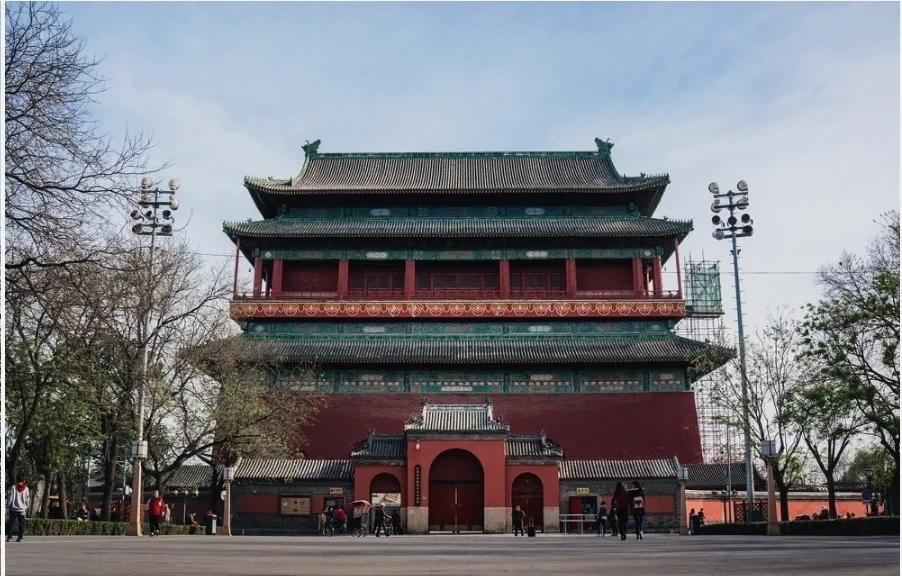Visiting Information
| Information | Details |
|---|---|
| Chinese Name | 八达岭长城 (Bādálǐng Chángchéng) |
| Location and Address | Yanqing District, Beijing, China |
| Opening Time/Hours | April 1 to October 31: 6:30 AM – 7:00 PM November 1 to March 31: 7:30 AM – 6:00 PM |
| Entrance Fee | Peak Season (April 1 to October 31): 40 CNY Off Season (November 1 to March 31): 35 CNY Cable car (optional): 100 CNY round trip |
| How to Get There | By Metro: Take Line 2 to Jishuitan Station, then take bus 877 to Badaling By Bus: Take bus 877 from Deshengmen Bus Station By Taxi: About 1.5 hours from downtown Beijing |
| Best Time for Visit | April to October, early morning to avoid crowds |
| Contact Info | Phone: +86 10 6912 1383 Email: [email protected] |
Overview
Badaling Great Wall is the most visited and best-preserved section of the Great Wall of China. Located in Yanqing District, about 70 kilometers northwest of Beijing, it’s renowned for its strategic position and historical significance. This section of the wall was built during the Ming Dynasty (1368-1644) and has been extensively restored, making it accessible to millions of visitors each year. Badaling offers stunning views of the surrounding mountains and provides a tangible connection to China’s rich history and architectural prowess.
Historical Background
The Badaling section of the Great Wall was initially constructed during the Ming Dynasty, around 1504. It served as a crucial defensive fortification, guarding the Juyongguan Pass, an important strategic point controlling access to Beijing from the north. The name “Badaling” means “reaching in all directions,” reflecting its commanding position. This section of the wall played a significant role in many historical battles and was considered one of the most important military strongholds protecting the capital. After the fall of the Ming Dynasty, Badaling, like much of the Great Wall, fell into disrepair. It was one of the first sections to be restored in the 1950s, opening to the public in 1958. Since then, it has become a symbol of China’s history and a major tourist attraction, hosting numerous international dignitaries and becoming the first choice for many visitors to experience the Great Wall.
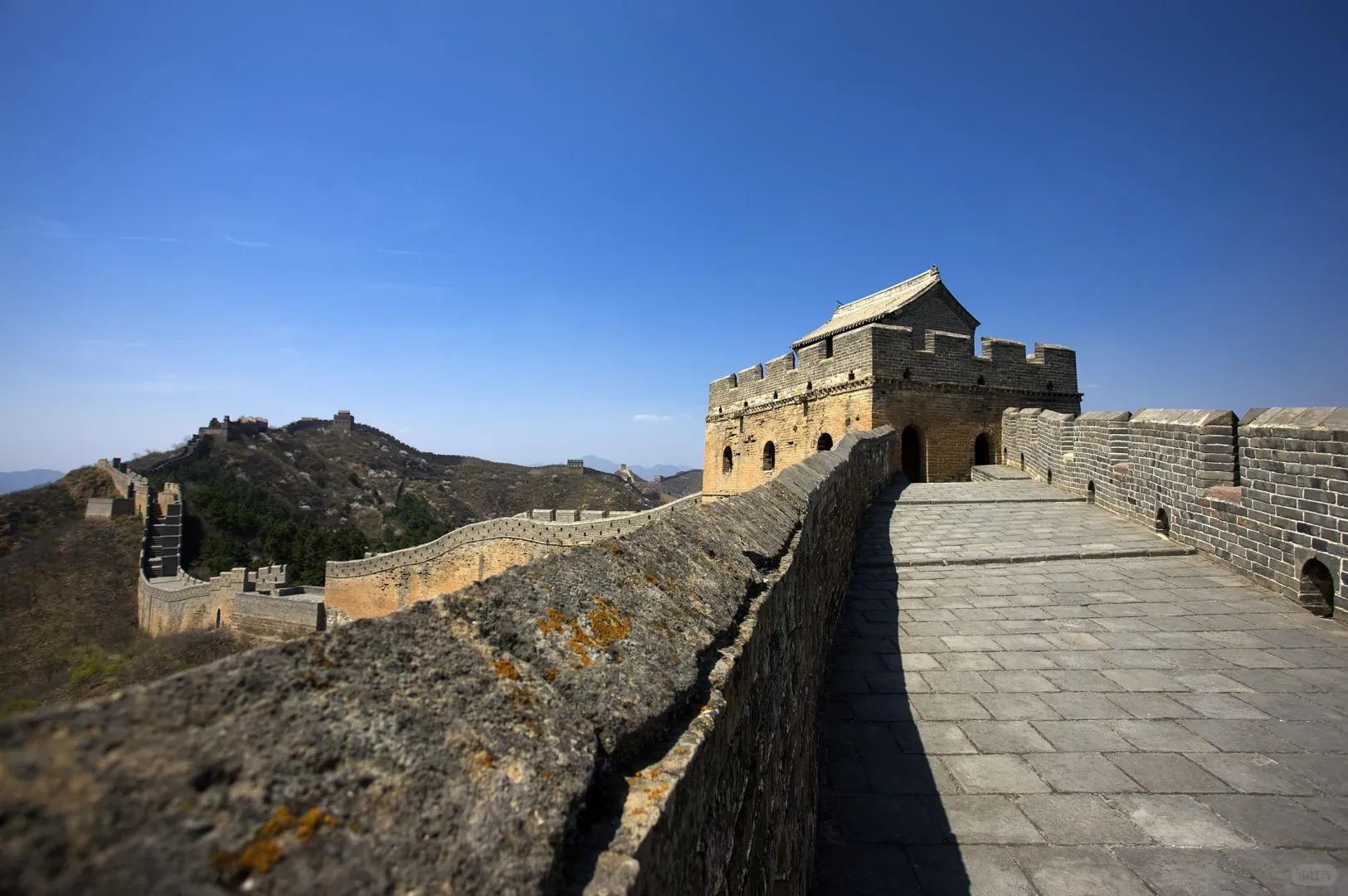
Architectural Features
- Wall Structure: The Badaling section is built with large, solid stones and bricks, making it one of the most robust parts of the Great Wall. The wall here is about 8.5 meters high and 5.7 meters wide at the base, tapering to 4.5 meters at the top. This width allows five horses to gallop abreast or ten soldiers to march side by side, demonstrating its military functionality.
- Watchtowers: Badaling features 19 watchtowers spread over its 3,741-meter length. These towers, typically two stories high, served multiple purposes including observation, signaling, storage, and shelter for soldiers. The towers are strategically placed at regular intervals, allowing for effective communication and defense along the wall.
- Battlements and Parapets: The top of the wall is lined with crenellations, providing cover for defenders. These battlements have small holes for archers to shoot through while remaining protected. The design of these defensive features showcases the advanced military architecture of ancient China.
- Beacon Towers: At higher points along the Badaling section, larger beacon towers were constructed. These towers were used for signaling over long distances, usually by lighting fires or creating smoke signals to warn of approaching enemies.
- Stone Tablets and Inscriptions: Various stone tablets and inscriptions can be found along the Badaling section, some dating back to the Ming Dynasty. These provide historical context and demonstrate the cultural significance of the wall beyond its military purpose.
Cultural Importance
Badaling Great Wall holds immense cultural importance as a symbol of Chinese civilization and national pride. It represents the ingenuity, determination, and collective effort of the Chinese people throughout history. As one of the most recognizable icons of China, Badaling has become a must-visit site for both domestic and international tourists, serving as a tangible link to China’s past. The wall has been featured in countless artworks, literature, and media, cementing its place in popular culture. It’s often used as a metaphor for China’s unity, strength, and endurance. Badaling’s status as a UNESCO World Heritage site further underscores its global cultural significance. The site has also played a role in modern Chinese history, hosting numerous state visits and becoming a platform for diplomatic events. Its restoration and opening to the public in the 1950s marked a pivotal moment in China’s efforts to preserve and showcase its cultural heritage. Today, Badaling continues to be a source of national pride and a key educational resource, helping to pass on knowledge of Chinese history and culture to future generations.
Surrounding Attractions
- China Great Wall Museum: Located at the foot of the Badaling Great Wall, this museum provides a comprehensive overview of the Great Wall’s history, construction, and cultural significance. It houses over 1,000 artifacts related to the Great Wall, including ancient weapons, historical documents, and scale models. The museum’s exhibits cover various dynasties and offer insights into the wall’s role in Chinese history and its impact on global culture.
- Badaling Bear Park: Situated near the Great Wall, this wildlife park is home to over 100 brown bears. Visitors can observe these majestic animals in a semi-natural environment. The park aims to educate the public about bear conservation and provides a unique opportunity to see these creatures up close. It’s particularly popular with families and offers a contrast to the historical focus of the Great Wall.
- Shuiguan Great Wall: Often referred to as the “Water Pass,” this less crowded section of the Great Wall is just 3 kilometers from Badaling. It offers a more rugged and authentic Great Wall experience, with steeper climbs and fewer renovations. The Shuiguan section provides stunning views of the surrounding mountains and valleys, making it a favorite among photographers and hikers seeking a more challenging adventure.
- Badaling Outdoor Ski Resort: During winter months, visitors can enjoy skiing and snowboarding at this nearby resort. It’s one of the closest ski areas to Beijing, offering a unique opportunity to combine winter sports with Great Wall sightseeing. The resort features several ski runs suitable for beginners and intermediate skiers, as well as equipment rental facilities and ski instruction.
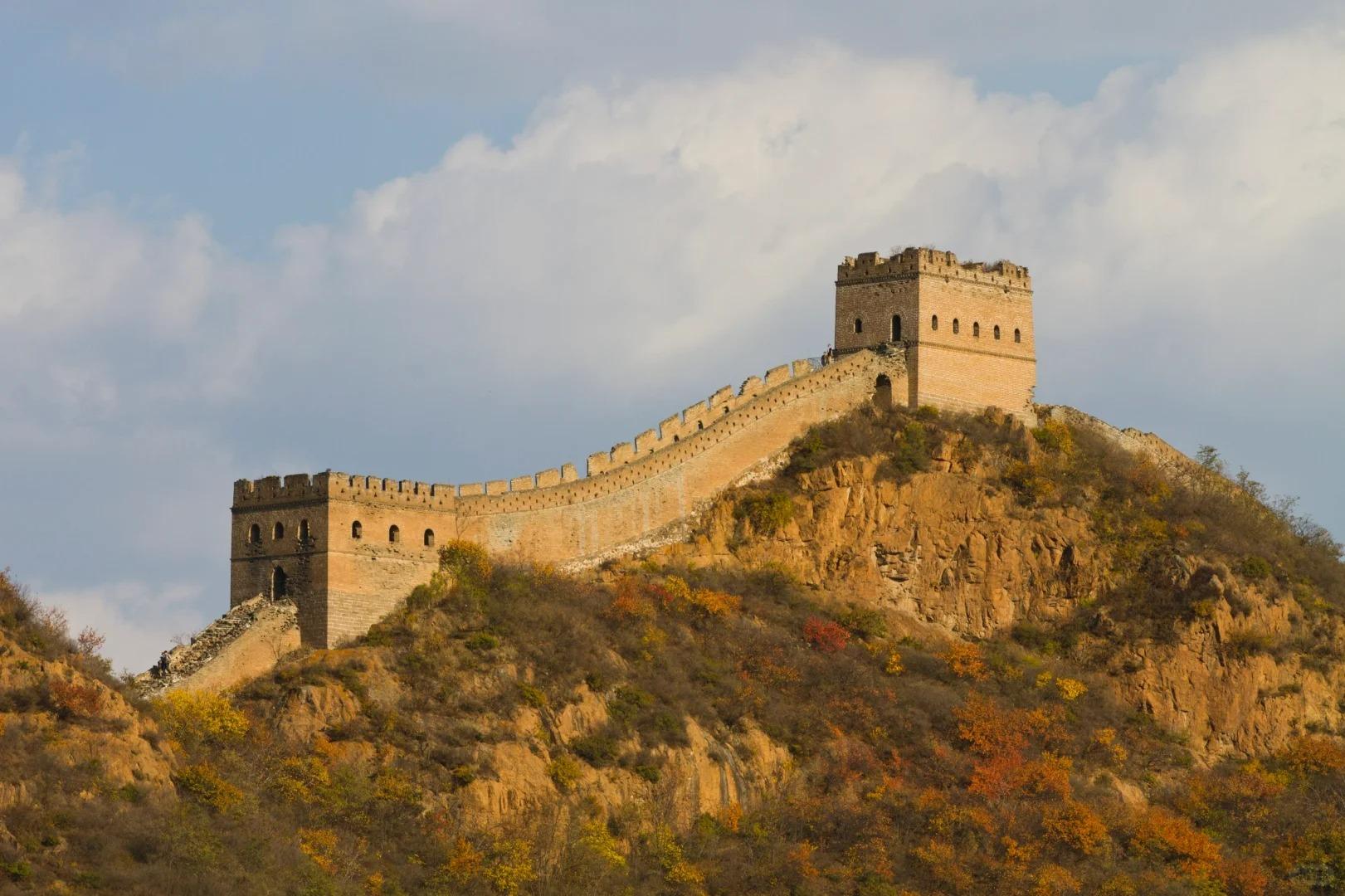
Photography Opportunities
- Panoramic Views from North 8th Tower: The North 8th Tower is one of the highest points of the Badaling section, offering breathtaking panoramic views of the wall snaking across the mountains. This vantage point is particularly popular for capturing the classic “endless wall” shot, especially during sunrise or sunset when the light casts long shadows across the landscape. Photographers can showcase the wall’s impressive scale and its harmony with the natural terrain from this location.
- Seasonal Landscapes: Badaling offers stunning photographic opportunities throughout the year, with each season providing a unique backdrop. Spring brings lush greenery and blooming flowers, summer offers clear skies and vibrant colors, autumn paints the surrounding forests in golden hues, and winter often covers the wall in a blanket of snow, creating a serene, otherworldly landscape. These seasonal changes allow photographers to capture diverse and captivating images of the same location.
- Architectural Details: The well-preserved architecture of Badaling provides excellent opportunities for close-up and detail shots. Photographers can focus on the intricate stonework, the texture of the ancient bricks, or the geometric patterns created by the battlements and arches. These detail shots can convey the wall’s age, craftsmanship, and historical significance.
- Night Photography: Although access is limited, special permissions can sometimes be obtained for night photography at Badaling. The wall illuminated against the night sky, with stars visible above, creates a magical and rarely seen perspective. Long-exposure shots can capture star trails over the wall, blending ancient architecture with the cosmos.
Modern Importance
- Tourism and Economic Impact: Badaling is a crucial driver of tourism in Beijing and China as a whole. As the most visited section of the Great Wall, it attracts millions of visitors annually, significantly contributing to the local and national economy. The site has spurred the development of tourism infrastructure, including hotels, restaurants, and transportation services in the surrounding area. This influx of visitors has created numerous jobs and business opportunities, playing a vital role in the economic development of the Yanqing District.
- Cultural Exchange and Diplomacy: Badaling serves as a platform for international cultural exchange and diplomacy. It has been visited by numerous world leaders and dignitaries, often as part of official state visits to China. These high-profile visits not only showcase China’s rich history and culture but also provide opportunities for informal diplomatic interactions. The site’s global recognition helps in fostering international understanding and appreciation of Chinese heritage.
- Conservation and Research: As a well-preserved section of the Great Wall, Badaling plays a crucial role in conservation efforts and historical research. It serves as a model for restoration techniques and management practices that can be applied to other sections of the wall. Ongoing research at Badaling contributes to our understanding of ancient Chinese engineering, military strategies, and daily life during the Ming Dynasty. The site also raises awareness about the importance of preserving cultural heritage, inspiring conservation efforts worldwide.
- Educational Value: Badaling Great Wall serves as an invaluable educational resource, both for Chinese students and international visitors. It offers tangible connections to China’s history, allowing visitors to experience and understand key aspects of Chinese culture, architecture, and military strategy. Educational programs and guided tours at Badaling help to pass on knowledge about Chinese civilization to younger generations and promote cultural literacy among visitors from around the world.

FAQ
- What is Badaling Great Wall famous for?
Badaling Great Wall is famous for being the most visited and best-preserved section of the Great Wall of China. It’s known for its strategic location, historical significance, and stunning views of the surrounding landscape. Badaling is often considered the most representative part of the Great Wall and has hosted numerous world leaders and celebrities. - What’s inside Badaling Great Wall?
Inside Badaling Great Wall, visitors can explore:
1. The restored wall and its watchtowers
2. The China Great Wall Museum
3. Several exhibitions about the wall’s history
4. Souvenir shops and restaurants
5. A cable car system for easier access to higher points
6. Stunning viewpoints overlooking the surrounding mountains - Is Badaling Great Wall free?
No, Badaling Great Wall is not free. There is an entrance fee that varies depending on the season. As of 2024, the fee is 40 CNY during peak season (April 1 to October 31) and 35 CNY during off-season (November 1 to March 31). Additional fees apply for optional services like the cable car. - Is Badaling Great Wall worth visiting?
Yes, Badaling Great Wall is definitely worth visiting. It offers a well-preserved and easily accessible experience of one of the world’s most famous landmarks. The views are spectacular, and the historical significance is immense. However, it can get crowded, especially during peak tourist seasons, so planning your visit carefully is advisable. - What to do in Badaling Great Wall?
At Badaling Great Wall, you can:
1. Walk along the restored wall and climb its watchtowers
2. Take the cable car for panoramic views
3. Visit the China Great Wall Museum
4. Enjoy photography opportunities
5. Learn about the wall’s history through informational plaques
6. Shop for souvenirs
7. Try local cuisine at nearby restaurants
8. Visit nearby attractions like the Bear Park or ski resort (seasonally) - How do I get to Badaling Great Wall in the local city?
To get to Badaling Great Wall from Beijing:
1. By public transport: Take subway Line 2 to Jishuitan Station, then bus 877 to Badaling Great Wall
2. By direct bus: Take bus 877 from Deshengmen Bus Station
3. By car or taxi: It’s about a 1.5-hour drive from downtown Beijing
4. By tour: Many organized tours in Beijing include transportation to Badaling - How to visit Badaling Great Wall?
To visit Badaling Great Wall:
1. Plan to arrive early to avoid crowds, especially during peak season
2. Wear comfortable shoes and clothing suitable for walking and climbing
3. Bring water, snacks, and sun protection
4. Consider using the cable car if you want to save energy or have limited mobility
5. Allow at least 2-3 hours for your visit
6. Visit the museum to enhance your understanding of the wall’s history
7. Be prepared for steep inclines in some sections
8. Consider hiring a guide for more detailed historical information
9. Check the weather forecast and dress accordingly
10. Respect the site and follow all rules and regulations


